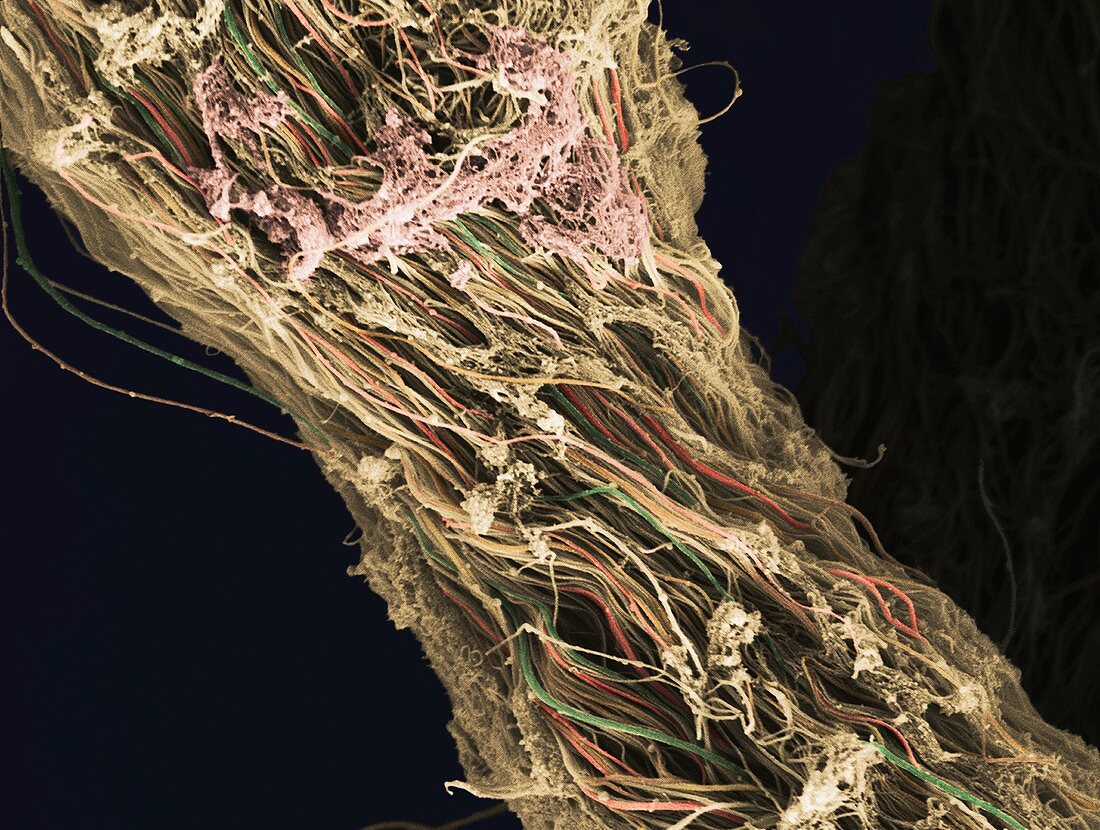Human connective tissue, SEM
Bildnummer 12968941

| Cartilage removed from a human knee during arthroscopic surgery, coloured scanning electron micrograph (SEM). Cartilage is a connective tissue and an important structural component of the body. It is firm and tough but softer and more flexible than bone. Its purpose can include acting as a shock absorber and allowing bones to slide over one another. It can be found in many areas of the body including joints between bones, for example, elbows, knees and ankles. Cartilage is made up of specialized cells called chondrocytes which produce large amounts of extracellular matrix composed of collagen fibres, proteoglycan and elastin fibres. There are no blood vessels in cartilage to supply the chondrocytes and due to this lack of blood vessels, cartilage grows and repairs more slowly than other tissues. Magnification: x4500 when printed at 10cm wide | |
| Lizenzart: | Lizenzpflichtig |
| Credit: | Science Photo Library / Anne Weston, EM STP, the Francis Crick Institute |
| Bildgröße: | 4823 px × 3638 px |
| Modell-Rechte: | nicht erforderlich |
| Eigentums-Rechte: | nicht erforderlich |
| Restrictions: |
|
Preise für dieses Bild ab 15 €
Universitäten & Organisationen
(Informationsmaterial Digital, Informationsmaterial Print, Lehrmaterial Digital etc.)
ab 15 €
Redaktionell
(Bücher, Bücher: Sach- und Fachliteratur, Digitale Medien (redaktionell) etc.)
ab 30 €
Werbung
(Anzeigen, Aussenwerbung, Digitale Medien, Fernsehwerbung, Karten, Werbemittel, Zeitschriften etc.)
ab 55 €
Handelsprodukte
(bedruckte Textilie, Kalender, Postkarte, Grußkarte, Verpackung etc.)
ab 75 €
Pauschalpreise
Rechtepakete für die unbeschränkte Bildnutzung in Print oder Online
ab 495 €
